UTokyo Olympians From the first athlete of Japan National Team to the 1976 Montreal Olympic Games

Research, education and legacies related to the sporting event
The Olympic and Paralympic Games will be held in Tokyo for the first time in more than half a century. The University of Tokyo, which is also located in the metropolis, has a long history of involvement with the Games. As you learn about UTokyo’s contributions to this global sporting event, the blue used in the Olympic and Paralympic emblem may very well start to take on the light blue hue of the University’s school color.
UTokyo Olympians
From the first athlete of Japan National Team to the 1976 Montreal Olympic Games
The Tokyo 2020 Summer Games will be known officially as the Games of the XXXII Olympiad. Yahiko Mishima and marathon runner Shiso Kanakuri became the first athletes of the Japan National Team, with Mishima being the first Olympian from UTokyo. A total of 33 UTokyo Olympians have left their names in Olympic history, many at a time when Japanese sports were still in their infancy. Here, we look back through the historical records and share the stories of several former UTokyo Olympians, with one of them speaking of his Olympic experience with the same passion as at that time.
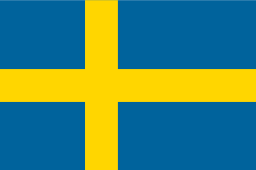 1912 Stockholm Games 1912 Stockholm Games |
Athletics (track and field) | Yahiko Mishima |
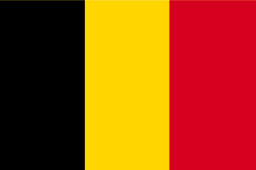 1920 Antwerp Games 1920 Antwerp Games |
Athletics (track and field) | Shinichi Yamaoka |
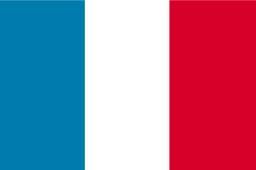 1924 Paris Games 1924 Paris Games |
Athletics (track and field) | Katsuo Okazaki |
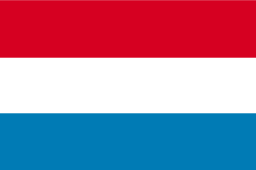 1928 Amsterdam Games 1928 Amsterdam Games |
Rowing | Tsukasa Sonobe |
| Rowing | Makoto Tsushida | |
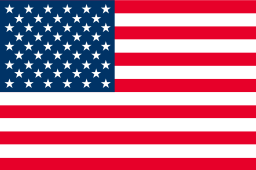 1932 Los Angeles Games 1932 Los Angeles Games |
Water polo | Kiyoshi Murai |
 1936 Berlin Games 1936 Berlin Games |
Football (soccer) | Toyoji Takahashi |
| Football (soccer) | Koichi Oita | |
| Football (soccer) | Teizo Takeuchi | |
| Rowing | Tadashi Shimijima | |
| Rowing | Tadashi Negishi | |
| Rowing | Masaru Kashiwahara | |
| Rowing | Shusui Sekigawa | |
| Rowing | Isamu Mita | |
| Rowing | Osamu Kitamura | |
| Rowing | Haruyoshi Nakagawa | |
| Rowing | Takeo Hori | |
| Rowing | Yoshiteru Suzuki | |
| Rowing | Susumu Yagi | |
| Rowing | Toshihara Kometani | |
| Basketball | Hidejiro Tanaka | |
| Basketball | Takao Nakae | |
| Basketball | Takehiko Kanokogi (Kanagoki) | |
 1960 Rome Games 1960 Rome Games |
Rowing | Osamu Saito |
| Rowing | Naotake Okubo | |
| Rowing | Hatsuhiko Mizuki | |
| Rowing | Shunji Murai | |
| Rowing | Koji Fukuda | |
| Sailing | Yasuo Hozumi | |
| Sailing | Mizuki Yamada | |
| Sailing | Yoshimatsu Sakaibara | |
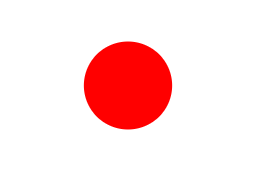 1964 Tokyo Games 1964 Tokyo Games |
Sailing | Masayoshi Kojima |
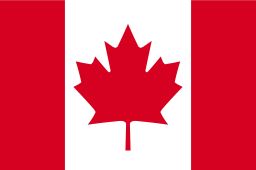 1976 Montreal Games 1976 Montreal Games |
Rowing | Masanobu Yamamoto |
Yahiko Mishima, a track and field star, qualified for the national Olympic team in 1911 by winning the 100-, 400- and 800-meter events at the preliminary trials held in Haneda, Tokyo. Although Mishima had been somewhat indifferent about participating in the trials, he changed his mind after some persuasion from Arata Hamao, the president of Tokyo Imperial University. Following the opening ceremony for the Stockholm Games, in which he served as Japan’s flag-bearer, Mishima entered the 100-meter event, thus becoming the first-ever Olympian from Japan. Although he was eliminated in the 100- and 200-meter rounds, he placed second in the 400-meter event (which had two entrants) but did not compete in the semi-finals. Following his own races, Mishima watched the swimming events and reportedly believed he might have been a winner had he competed as a swimmer instead. He was played by Toma Ikuta in the NHK flagship saga drama, “Idaten: Tokyo Olympics Story” broadcast in 2019.
A grandchild of samurai Tesshu Yamaoka, the sprinter Shinichi Yamaoka won at the Komaba trials and competed in the 100-meter and 200-meter events at the 1920 Antwerp Games. After the Olympics, he continued contributing to the Olympics from the athlete support side, and also served as chair of the organization that would later become the Inter-University Athletic Union of Kanto. Although Katsuo Okazaki won the 800-meter and 1500-meter races at the same Komaba trials, he was not selected for the national team that year. Later, however, as an official of the Embassy of Japan in the UK, he did make it onto the national team that went to the 1924 Paris Games. Despite placing second in the 5000-meter qualifying round, Okazaki was injured in the foot by another runner during the competition and dropped out of the final after losing consciousness due to the pain. This was a scene of the youthful days of a future politician who later served as chief cabinet secretary and foreign minister.
At the Amsterdam Games in 1928, two UTokyo athletes debuted in the rowing events. They competed in the coxed-four rowing event along with teammates from Nihon University and Waseda University, but lost the consolation race. The Fifty-year History of the Tokyo Imperial University Rowing Team book includes a photo taken of Makoto Tsushida at the Amsterdam Games, and lists him as a 1929 Intercollegiate champion (as well as a champion in the London Cup). Records from the swim team’s alumni association list UTokyo graduate Kiyoshi Murai participating in the Los Angeles Games as a member of the national water polo team. The Japan team lost all three matches, finishing in fourth place among four teams at Los Angeles Games in 1932.
Seventeen UTokyo athletes achieved status as Olympians at the 1936 Berlin Games. The UTokyo rowing crew represented Japan in the Eights event. Although they had demonstrated Japan’s rowing prowess on the sport’s home turf with victories at the preliminary trials in London, they nevertheless lost the consolation race at the Berlin Games. Three UTokyo athletes were on Japan’s basketball team. Takehiko Kanokogi, who scored 12 points in three games, stood at over 190 cm tall; his exceptional stature was highlighted by an illustration in the Bulletin of the UTokyo Athletic Foundation (undokai-ho) published in October 1936. Three UTokyo players were on Japan’s football team to the Berlin Games, and contributed to the “Berlin miracle,” which saw Japan upset the projected champion, Sweden. As captain, Teizo Takeuchi played three defensive positions and following the Berlin Games, aided the development of Japanese football by sharing information he had gleaned on the latest trends in Europe.
Although UTokyo athletes did not witness the Olympic torch for some time afterward, they re-emerged as Olympians again in the rowing and sailing events at the Rome Games in 1960. The sailing team included three UTokyo alumni, participating as working professionals. As an architect, Mizuki Yamada later helped design the Enoshima Yacht Harbor Club House, while Yasuo Hozumi went on to serve as coach for the Japanese sailing team at the 1992 Barcelona Games.
The most recent UTokyo alum to gain status as an Olympian was Masanobu Yamamoto, who took part in the Montreal Games as a rower in the Eights event in 1976. Yamamoto was a UTokyo rowing team veteran who would later be involved in the development of Sony’s compact disc. Hideki Tanzawa, a student in the Graduate School of Frontier Sciences, participated in the 2004 Athens Paralympic Games as a pilot in the para-cycling time trials. We look forward to the debut of a new generation of Olympians and Paralympians who will again accent the Games with UTokyo’s school color, light blue.
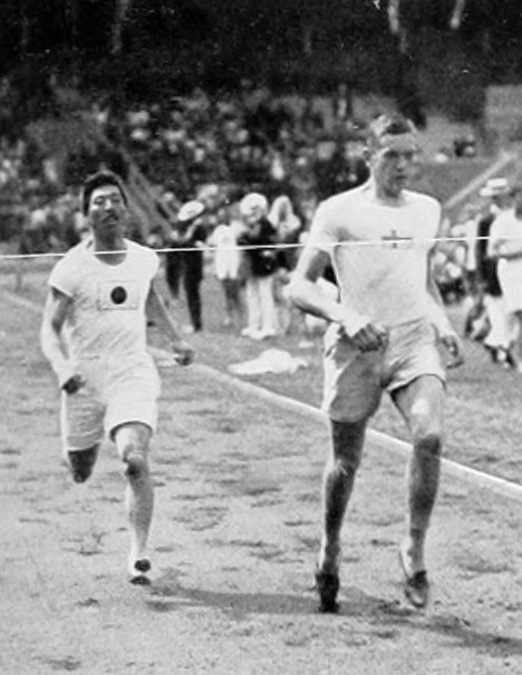
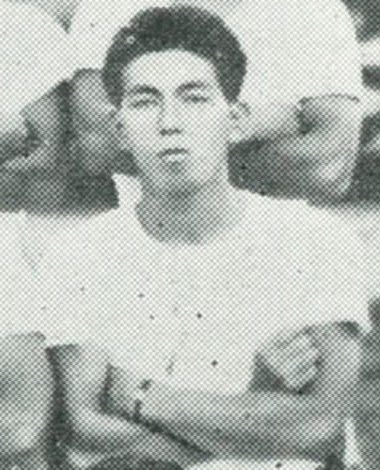
※From the Fifty-year History of the Tokyo Imperial University Rowing Team
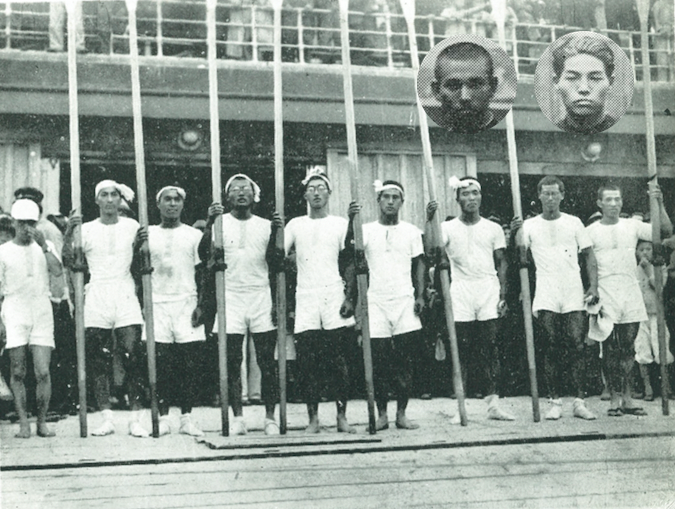
※From the Fifty-year History of the Tokyo Imperial University Rowing Team
-
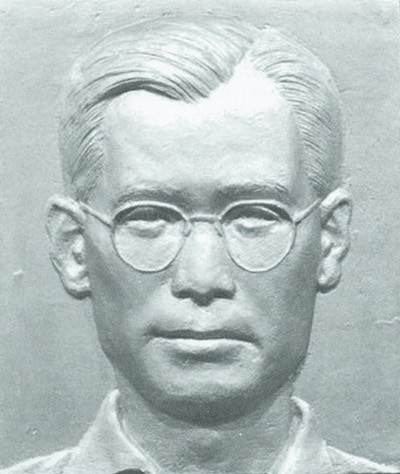
An engraving of Teizo Takeuchi, captain of the Japanese football team to the Berlin Games in 1936 (from the relief of the Japan Football Hall of Fame in the Japan Football Museum).
※ From Ninety-Year History: Fighting Spirit of University of Tokyo Association Football Club -
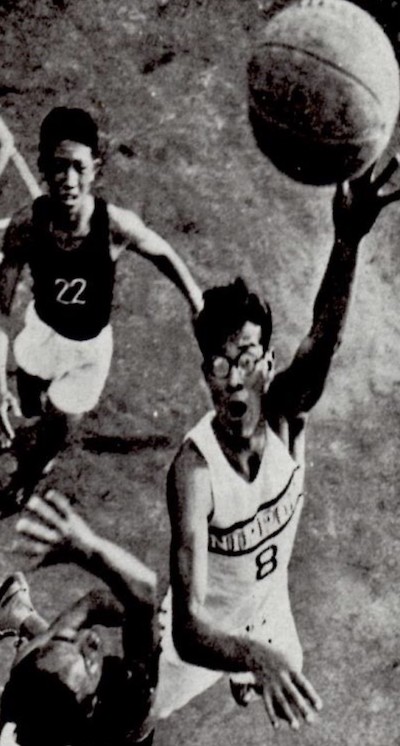
A shot of Takehiko Kanokogi, a player on the Japanese basketball team at the 1936 Berlin Olympics.
※From historical records on the University of Tokyo basketball team.
Japan’s participation in the rowing events at the 1960 Rome Games
Made possible by the UTokyo team’s first-ever scientific approach to training
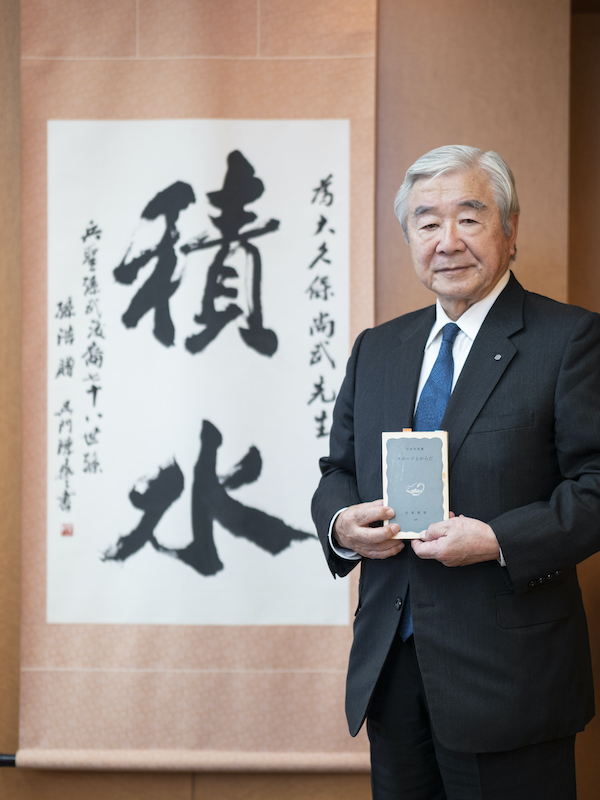
Naotake Okubo
Chairman, Japan Rowing Association
Honorary Advisor to Sekisui Chemical Co., Ltd.
In the reception room at Sekisui Chemical Co., Ltd., the company he has served both as president and chairman. The company name Sekisui derives from the name of the famous Chinese general Sun Tzu. “This hanging scroll was drawn for me by a descendant of Sun Tzu when I was in China on a business trip,” Okubo says. He is holding a book, Supotsu to Karada [Sports and the human body] (Iwanami Shinsho, 1962), that is authored by Toshihiro Ishiko. Photo: Takumi Inoue
When I was a middle school student in the Hokkaido town of Kutchan, Hokkaido University’s rowing team became the national champion. It had quickly developed strength after Juro Horiuchi, a former UTokyo rower, took over as its coach. Upon reading about its accomplishments in the Hokkaido Shimbun, a local newspaper, my enthusiasm soared, and after graduating from Hokkaido Sapporo Minami High School, I enrolled in the University of Tokyo and joined the rowing team.
The UTokyo rowing team had been a driving force for the wider Japanese competitive rowing community, but after appearing in the 1936 Berlin Games, failed to qualify in the domestic Olympic trials for the subsequent Helsinki and Melbourne Summer Games in 1952 and 1956. Frustrated by those circumstances, many former rowing team veterans came to our training location, the Toda Rowing Course in Saitama Prefecture, to motivate us with the cry that the UTokyo rowing team absolutely had to be a presence at the Rome Games.
Although the Olympics still seemed far removed from everyday reality, we began lodging at the training camp in September 1959 with our sights focused on the domestic trials that had been scheduled for May the following year. It was at this time that we first adopted a science-based training program. Assistant Professor Toshihiro Ishiko from UTokyo’s Faculty of Medicine cooperated with our team in that undertaking, as he was close friends with the veteran rowers that had failed to qualify at the Helsinki trials. As we continued to follow his training regimen with daily measurements of arm, leg and hip strength as well as cardiopulmonary function, we soon experienced drastic gains in physical strength.
Then we faced our first big challenge. Although our team lost to Tohoku University in the Eights event, we won the finals in the Coxed-four with help from underclassmen and qualified for the Olympics. At that time I was in my third year at UTokyo and a member of the rowing crew for the Coxed-four. Once again we returned to our training camp to prepare for the true challenge ahead. This was right in the middle of the nationwide protest movement against the Japan-US Security Treaty. On June 15, 1960, a radio newscast reported that a UTokyo student had become a victim of the conflict. I recall asking myself whether it was okay for us to be engaged in our rowing practice at a time like this.
In mid-July, we packed and left from Haneda Airport. This would be my first experience both with flying and travel abroad. When we arrived in Rome and began de-boarding, we were met by a formation of female companions all dressed in blue. I was floored to see so many beautiful ladies, and also left in awe by the Olympic Village. In the cafeteria, everything was provided buffet style; even the ice cream was all-you-can-eat. That was my first experience with Coca-Cola, too. Many of the Olympic athletes were stars that we had only seen in magazines before, and some of the athletes were at least two meters tall. “So this is the world,” I thought to myself.
During our stay in Rome, we took the bus every day to Lake Albano, the venue for rowing events at the Games. Watching the other teams in practice left me acutely aware that they had a quantum advantage in power. The teams from the Commonwealth and European countries were all extremely strong. In our own event, we were thoroughly defeated. Only 20 seconds from our initial position in the lead, and we were already 100 meters behind. Totally helpless. While I didn't think we would enjoy an easy win, I certainly didn't anticipate we would finish in last place, either.
After our event, I utilized some connections with the University of Oxford to make a trip to Britain. Upon visiting the River Thames, the veritable holy land for rowing, I came across a high-school boathouse with as many as 400 single-seater sculls, each bearing an individual’s name. Apparently, most students had their own sculls. In those days, UTokyo had only one scull. This was a shock. All I could think about was the future of rowing as a sport in Japan. That is the only time my head has ever physically ached.
In my fourth year at UTokyo, we won the All-Japan championships in the Eights event. To help the UTokyo rowing team build its competitive strength, the following spring I chose to work as a rowing coach instead of hunting for a company job. Even after landing a mid-career job with the company Sekisui Chemical, on weekends I continued to serve as a coach but gave it up after transferring to another post in Osaka.
Nevertheless, I still wanted to help strengthen the sport of rowing in Japan, and since 2004 have been engaged as chairman of the Japan Rowing Association. Three years ago, I invited a French gold medalist to come to Japan and work as a head coach. Although Japanese rowing teams do not yet occupy a strong position in the world rankings, Chiaki Tomita recently earned the silver medal at the 2019 World Rowing Championships.
“One boat, but not one rower.” This is a perspective that cuts to the core of rowing as a sport. You will not be fast if only one rower is strong. It’s essential that everyone row in sync as a team. Rowing compels us to think of the whole organization or team as one, and helps each of us grow as a result. The friends you make in this sport will be friends for life. I want everyone who enrolls in a university to take the opportunity to join the school’s rowing team, too.
-
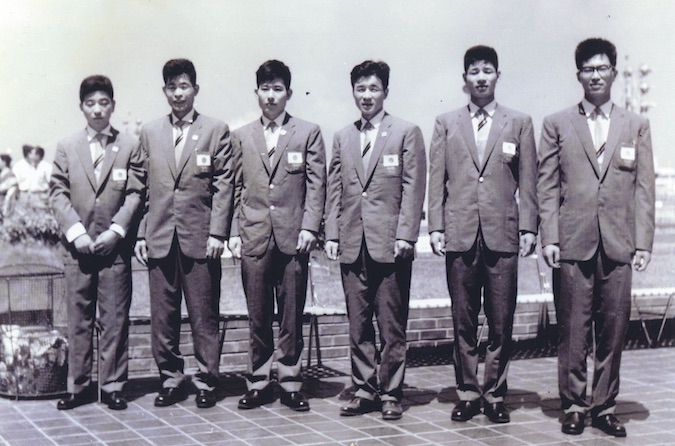
The UTokyo rowing crew at Haneda Airport, waiting to depart. Naotake Okubo is third from the right. -
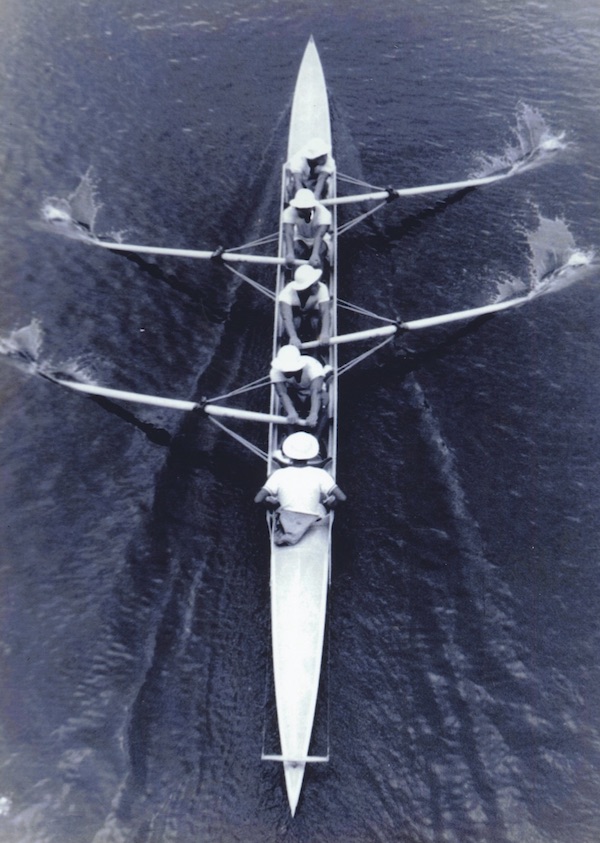
The UTokyo crew rowing with powerful strokes at the 1960 Rome Olympics.
* This article was originally printed in Tansei 40 (Japanese language only). All information in this article is as of March 2020.






